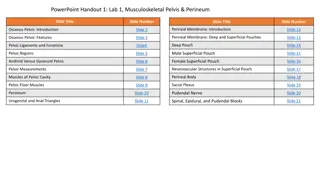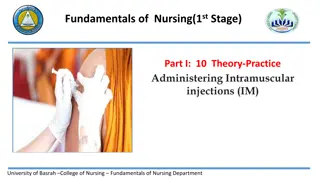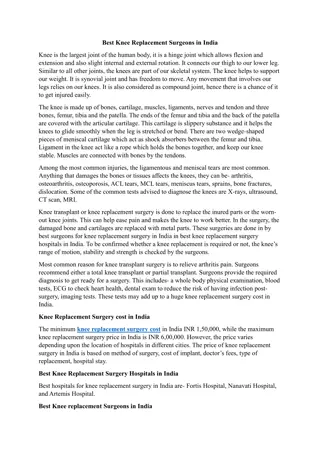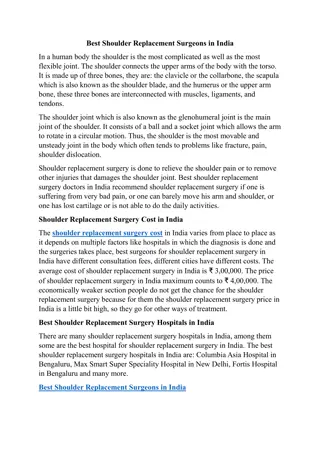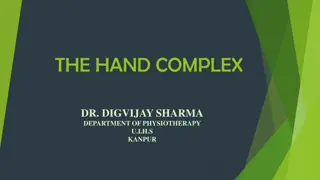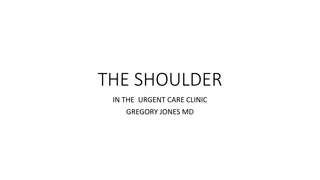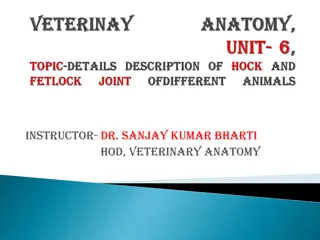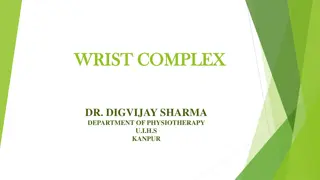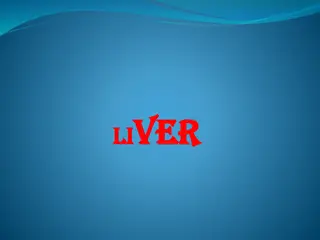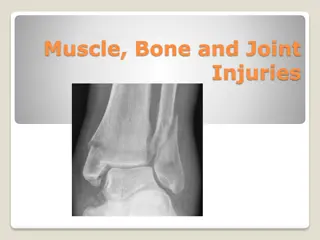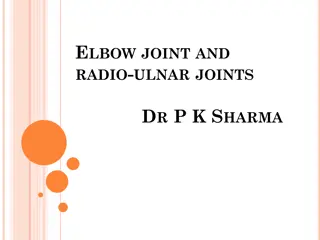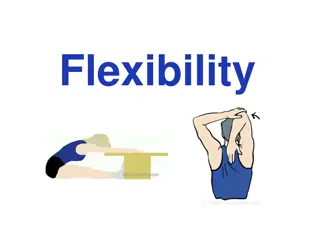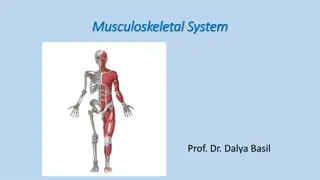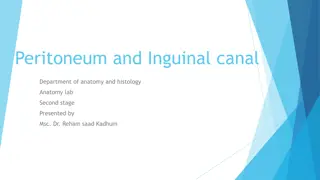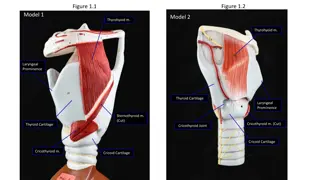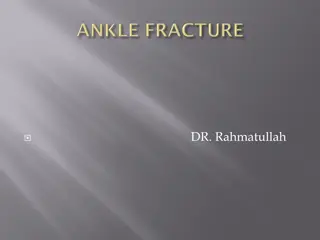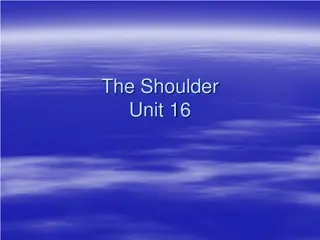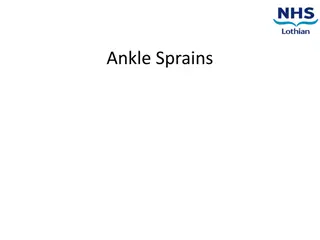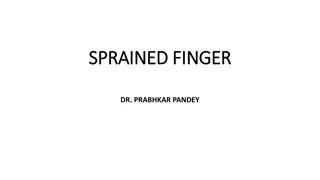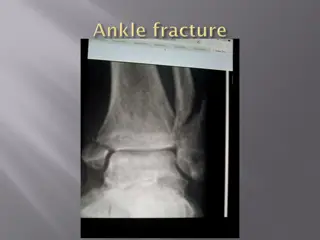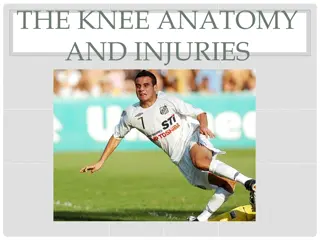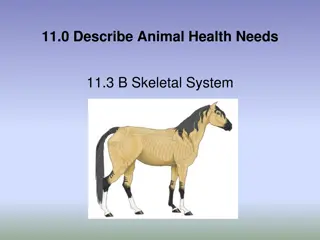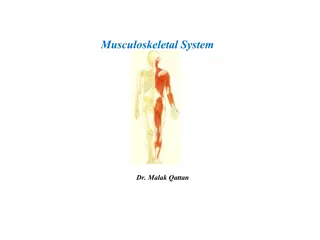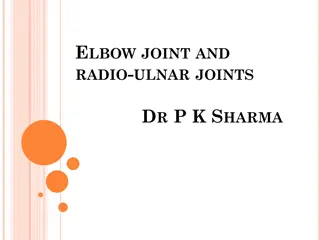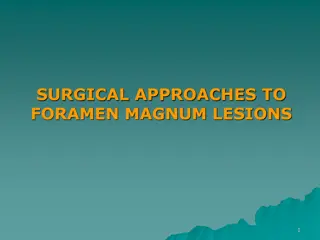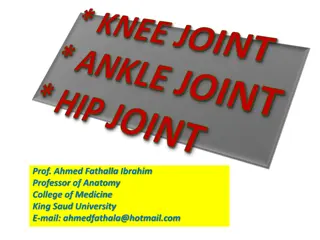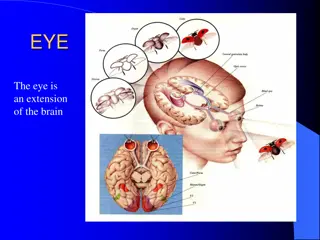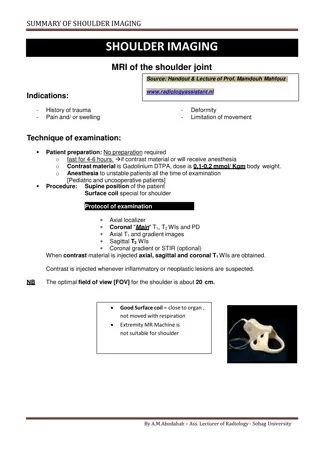Musculoskeletal Pelvis & Perineum Overview
Explore the anatomy of the pelvis and perineum, including the osseous pelvis structure, features, ligaments, and pelvic regions. Learn about the division of the abdominopelvic cavity and key neurovascular structures in this comprehensive PowerPoint presentation.
2 views • 21 slides
Fundamentals of Nursing: Administering Intramuscular Injections
Learn about the theory and practice of administering intramuscular injections at the University of Basrah College of Nursing. Understand the importance of IM injections, the sites for administration including the vastus lateralis and deltoid muscles, proper techniques for injection, and more.
1 views • 21 slides
Understanding Kinesiology Taping Techniques and Benefits
Kinesiology taping is a technique utilizing thin, flexible tape to relieve pain, reduce swelling, and provide support to muscles and joints. Introduced by Dr. Kenzo Kase in the 1970s, it includes techniques such as muscle, ligament, fascial, correction, lymphatic drainage, and functional movement te
8 views • 14 slides
Best Knee Replacement Surgeons in India
Knee is the largest joint of the human body, it is a hinge joint which allows flexion and extension and also slight internal and external rotation. It connects our thigh to our lower leg. Similar to all other joints, the knees are part of our skeletal system. The knee helps to support our weight. It
0 views • 2 slides
Best Shoulder Replacement Surgeons In India
In a human body the shoulder is the most complicated as well as the most flexible joint. The shoulder connects the upper arms of the body with the torso. It is made up of three bones, they are: the clavicle or the collarbone, the scapula which is also known as the shoulder blade, and the humerus or
0 views • 2 slides
Understanding the Complex Structures and Functions of Joints in the Hand
The hand complex consists of 19 bones and 19 joints distal to the carpals, with each digit having specific joints that facilitate movement and flexibility. Detailed descriptions of CMC joints, MCP joints, and the role of ligaments and accessory structures in enhancing stability are provided, sheddin
3 views • 33 slides
Overview of Foot Joints and Bones: Anatomy and Movements
Foot anatomy involves 26 bones forming various joints like interphalangeal, metatarso-phalangeal, and tarso-metatarsal joints. Ligaments and movements at these joints play crucial roles in foot function. Understanding the structure and function of these joints is essential for medical professionals
2 views • 19 slides
Understanding Shoulder Anatomy and Common Disorders
The shoulder is a complex joint consisting of multiple components like joints, muscles, ligaments, and capsules. Understanding its anatomy is crucial for diagnosing common disorders such as rotator cuff issues, tendinitis, tears, and frozen shoulder. History, examination, and palpation techniques ar
2 views • 21 slides
Veterinary Anatomy: Tarsal Bone Structure and Ligaments
Veterinary anatomy lesson featuring the composite joint of the tarsus in an ox, detailing the arrangement of short bones in the tarsus and the ligaments involved. Images and descriptions explain the composition of the composite joint, the types of movements it allows, and the ligaments supporting it
3 views • 28 slides
Understanding the Temporomandibular Joint (TMJ) Anatomy
The temporomandibular joint (TMJ) is a complex joint formed by the articulation between the temporal bone and the mandible. It consists of a fibrous intra-articular disk that aids in movement and stability. The disk is biconcave with anterior and posterior bands, and attachments to ligaments and mus
0 views • 45 slides
Understanding the Anatomy of the Wrist Complex
The wrist complex consists of the radiocarpal joint and midcarpal joint, formed by various bones and ligaments. The radiocarpal joint involves the radius, radioulnar disc, scaphoid, lunate, and triquetral bones. In a neutral position, the ulna does not participate in this joint. The midcarpal joint
0 views • 16 slides
Ankle Injuries and Pain Overview - MD Pediatric Orthopedics
Explore the causes, types, and treatment of ankle injuries and pain, focusing on sprains, fractures, and impingement issues. Discover insights on ankle sprains in children and adults, ligament anatomy, common injury mechanisms, and essential ligaments involved. Gain valuable information on distingui
0 views • 55 slides
Insights into Liver Anatomy, Function, and Imaging Studies
Delve into a comprehensive overview of the liver's anatomy, including ligaments, blood supply, and structure in the hilum. Explore the vital functions performed by the liver, such as maintaining body temperature, synthesizing clotting factors, and drug metabolism. Discover liver function tests and t
3 views • 22 slides
Understanding Muscle, Bone, and Joint Injuries: Care and Treatment
Explore musculoskeletal injuries, head and back injury signals, and proper care techniques. Learn about ligaments, sprains, strains, fractures, dislocations, and RICE treatment for strains and sprains. Discover why RICE method is beneficial and methods for splinting fractures and dislocations.
0 views • 27 slides
Comprehensive Overview of Elbow Joint Anatomy and Function by Dr. P.K. Sharma
This detailed presentation by Dr. P.K. Sharma covers the anatomy, types of joints, articular surfaces, ligaments, relations, bursae, stability, blood supply, nerve supply, and common conditions related to the elbow joint. It provides insights into the complexity and functional aspects of the elbow j
0 views • 30 slides
Understanding Flexibility and Joint Health
Flexibility is essential for optimal joint health, allowing for smooth movement and reducing the risk of injuries. Joints, ligaments, muscles, and tendons play crucial roles in supporting flexibility and mobility. Maintaining flexibility through activities like static stretching can promote overall
0 views • 43 slides
Understanding the Musculoskeletal System in the Human Body
The musculoskeletal system, comprising the muscular and skeletal systems, supports body movement, stability, and shape. It includes muscles, bones, tendons, ligaments, and joints. This system serves functions like providing support, protection to vital organs, mediating movement, and producing blood
0 views • 36 slides
Understanding Peritoneum and Inguinal Canal in Anatomy
Peritoneum is a thin serous membrane covering the abdomen and pelvis, consisting of parietal and visceral layers with a peritoneal cavity between them. Learn about peritoneal relations, intraperitoneal versus retroperitoneal organs, and folds of peritoneum like ligaments and omenta in this detailed
0 views • 21 slides
Anatomy of the Larynx: Detailed Illustrations and Muscle Actions
Detailed illustrations and descriptions of the anatomy of the larynx, including structures such as the thyroid cartilage, epiglottis, vocal folds, and muscles like the cricothyroid and posterior cricoarytenoid. The images depict the laryngeal landmarks, ligaments, and nerves, providing a comprehensi
0 views • 5 slides
Comprehensive Overview of Ankle Fractures and Ligamentous Anatomy
Ankle fractures are more prevalent in elderly women, with isolated malleolar fractures being the most common type. Understanding the complex hinge joint and ligamentous structures of the ankle is essential for diagnosis and treatment. The syndesmotic ligament complex plays a crucial role in stabiliz
0 views • 44 slides
Understanding Upper Extremity Injuries and Shoulder Physiology
Upper extremities are prone to various injuries in sports, including sprains, strains, dislocations, fractures, and repetitive motion injuries like arthritis and tendonitis. The shoulder complex involves bones, muscles, tendons, ligaments, and articulations. Joints like the sternoclavicular, acromio
0 views • 63 slides
Understanding Ankle Sprains: Causes, Symptoms, and Management
An ankle sprain is an injury to the ligaments supporting the ankle, commonly caused by twisting, sudden movements, or muscle weakness. Symptoms include pain, swelling, and restricted movement. Diagnosis involves a physical examination, and management can include self-care, medications, lifestyle cha
0 views • 12 slides
Understanding Sprained Fingers: Causes, Symptoms, and Treatment
A sprained finger occurs when ligaments are torn or stretched, leading to pain, swelling, and limited mobility. Sprains can range from mild to severe, with varying symptoms and degrees of instability. Common causes include physical impact or sports injuries, such as basketball. Diagnosis involves ob
0 views • 11 slides
Understanding Ankle Injuries and Treatment Options
Explore the anatomy of deltoid ligaments, fibula, medial malleolus, and posterior malleolus in ankle injuries. Learn about deformities, swelling, and bruises associated with these injuries. Discover diagnostic techniques like radiographs and Lauge-Hansen classification. Delve into non-operative and
0 views • 15 slides
Understanding Knee Anatomy and Injuries
Explore the intricate structures of the knee joint, including the femur, patella, meniscus, ligaments, and muscles. Learn about common knee injuries and their impact on stability and function. Delve into the complexities of the ACL, PCL, MCL, and LCL ligaments, crucial for knee integrity during vari
0 views • 40 slides
Understanding Animal Skeletal System: Importance and Components
The skeletal system in animals plays a crucial role in providing structural support, facilitating movement, and offering protection to vital organs. It is composed of various components like bones, joints, ligaments, tendons, compact bone, and spongy bone. Different types of bones in an animal's bod
0 views • 13 slides
Understanding the Musculoskeletal System and Common Bone Disorders
The musculoskeletal system comprises bones, joints, ligaments, cartilage, and muscles, with the skeleton providing support, protection, and enabling movement. Learn about the functions of the skeletal system, its divisions, and common bone diseases such as osteoporosis and fractures.
0 views • 8 slides
Comprehensive Guide to Knee Joint Replacement Surgery
Explore the detailed journey of knee joint replacement surgery, covering the surgical process, recovery expectations, possible complications, knee anatomy overview, types of arthritis, knee compartments, and surgical treatments for partial and total knee replacements. Gain insights into why and how
0 views • 35 slides
Comprehensive Overview of Elbow Joint Anatomy by Dr. P.K. Sharma
This detailed resource covers the anatomy of the elbow joint including its articulations, type as a synovial hinge joint, articulating surfaces, ligaments, relations, bursae, stability factors, blood supply, nerve supply, carrying angle, and common conditions like golfer's elbow and tennis elbow. Dr
0 views • 30 slides
Surgical Approaches to Foramen Magnum Lesions: Anatomy and Considerations
Surgical approaches to foramen magnum lesions involve understanding the anatomical structures, diameters, condyles, and contents of the region. Critical considerations include the choice of surgical approach based on the location and extent of the lesion, size, and nature of the pathology. Approache
0 views • 53 slides
Understanding the Anatomy of the Knee Joint
Explore the complex structure of the knee joint with Prof. Ahmed Fathalla Ibrahim, a respected Professor of Anatomy at King Saud University. Learn about the types and articular surfaces of the knee joint, the capsule and its ligaments, important bursae, movements of the knee joint, and nerve supply
0 views • 38 slides
Exploring the Intricacies of the Human Eye and its Functions
Delve into the fascinating world of the human eye, an extension of the brain, as we explore its proximity to the optic nerve bundle and spinal cord. Understand the crucial role of the retina, lens, cornea, optic nerve, ciliary muscles, and suspensory ligaments in vision. Discover how the retina rece
0 views • 13 slides
Comprehensive Guide to Shoulder MRI Imaging and Interpretation
Shoulder MRI imaging is valuable for assessing trauma, pain, swelling, deformity, and movement limitations. This detailed guide covers patient preparation, examination techniques, protocol, and interpretation of shoulder scans including assessment of tendons, ligaments, bursae, and bones.
0 views • 12 slides
